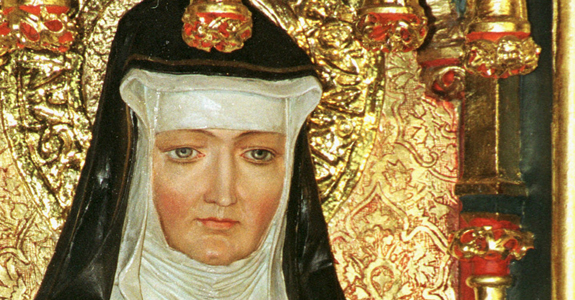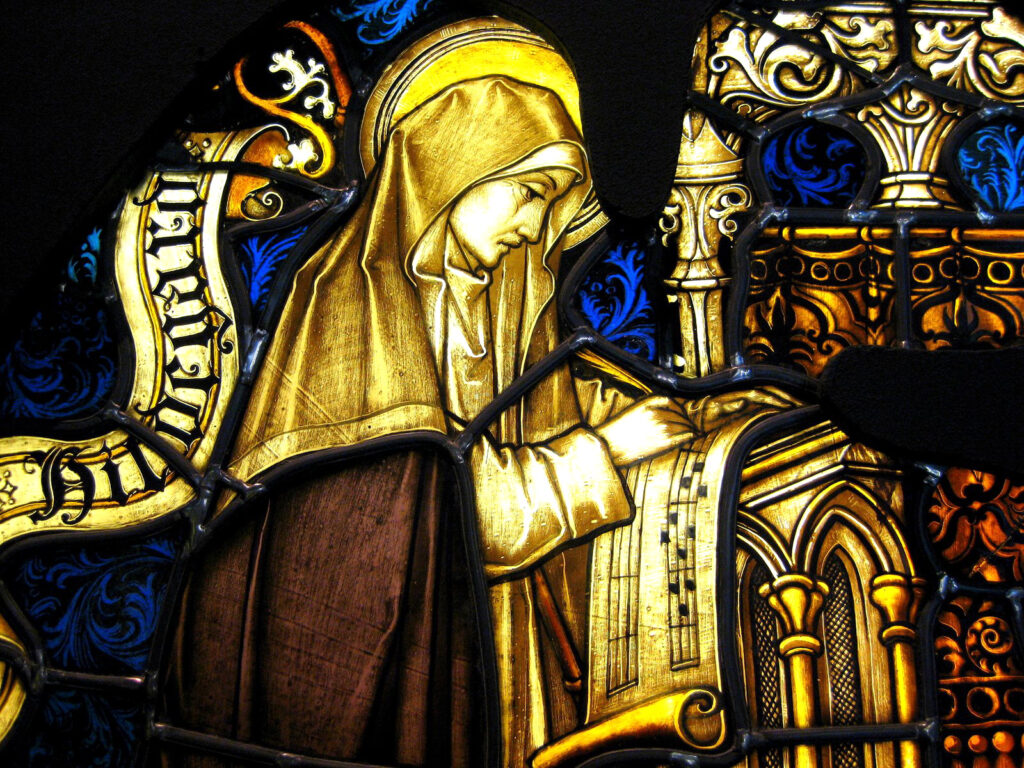
Five important points about Saint Hildegard
Hildegard von Bingen was a remarkable medieval woman who made contributions in various fields such as mysticism, music, art, herbalism, and theology. Here are five important points about Saint Hildegard.
- Saint Hildegard of Bingen was a German Benedictine abbess, writer, composer, philosopher, and polymath who lived in the 12th century.
- She was considered a visionary and mystic, and is known for her spiritual writings, including her book “Scivias,” in which she recorded her mystical visions and experiences.
- Hildegard was also a respected healer, and her medical writings contain descriptions of various herbs and natural remedies that she believed had medicinal properties.
- Hildegard was also a talented composer and musician, and she is credited with composing over 70 works of music, including hymns, sequences, and antiphons.
- Hildegard was canonized by Pope Benedict XVI in 2012, and she is now recognized as a Doctor of the Church, one of only 36 people to have received this honor.
Table of Contents
About Saint Feast Day
On 7 October 2012, the feast of the Holy Rosary, the pope named her a Doctor of the Church, the fourth woman of 35 saints given that title by the Roman Catholic Church. He called her “perennially relevant” and “an authentic teacher of theology and a profound scholar of natural science and music.” She is becoming a global phenomenal.

A Short History about Saint Hildegard
It took more than 800 years for the church to formally canonize Hildegard of Bingen. Her elevation by Pope Benedict XVI was announced May 1, 2012 at the Vatican.
“I saw a very bright light, and inside it there was a person who was the color of a sapphire. This person and bright light were completely surrounded by a very pleasant fire of reddish color. The very bright light completely surrounded this fire of reddish color, and at the same time this fire completely surrounded the light. Both the fire and the light surrounded the person, existing as one light with one force of potentiality. And then I heard the Living Light speak to me.”
Saint Hildegard
The 12th-century German Benedictine abbess and mystic has been venerated for centuries by Christians, but the delay in her official recognition could have had something to do with her very unorthodox kind of sanctity.
Scripture and theology
At a time when two ecumenical councils were dissolving the marriages of all priests and cutting adrift their wives and children, Hildegard was proclaiming the special dignity of women in her speeches, books and music. She was, in fact, so far ahead of her time that she was neither understood nor taken seriously by the hierarchy, thereby avoiding for most of her life sanction or investigation. Here are a few of her positions on scripture and theology.
There exists in the inner being of God an almost erotic balance of feminine and masculine, which is mirrored in the complementary relationship of men and women.
Since Jesus took his body from a woman, it is woman rather than man who best represents the humanity of the Son of God.
Contrary to St. Augustine’s position, sexual pleasure is not the result of sin, should not be equated with guilt and would have been present in Paradise before the Fall.
In opposition to church belief at the time, menstruation does not render a woman unclean, but the shedding of blood in war certainly renders a soldier unclean.
Abbess
During her life, Hildegard founded two monasteries, authored books on theology, ecology, natural science, medicine and gardening. She wrote hundreds of hymns and songs, which are still in the top 100 at Amazon.com. She corresponded with the political leaders of the day, traveling up and down the Rhine, and even threatened German Emperor Frederick Barbarossa for daring to impinge on the freedom of the church.
In a sense, St. Hildegard of Bingen could be considered a 12th-century combination of Joan Chittister, Mother Teresa and Joan Baez.
Read more from this article in the National Catholic Register.
Global Phenomenal?
The Unruly Mystic: Saint Hildegard, a feature documentary film, directed by Michael M. Conti (USA) 65 minutes.
